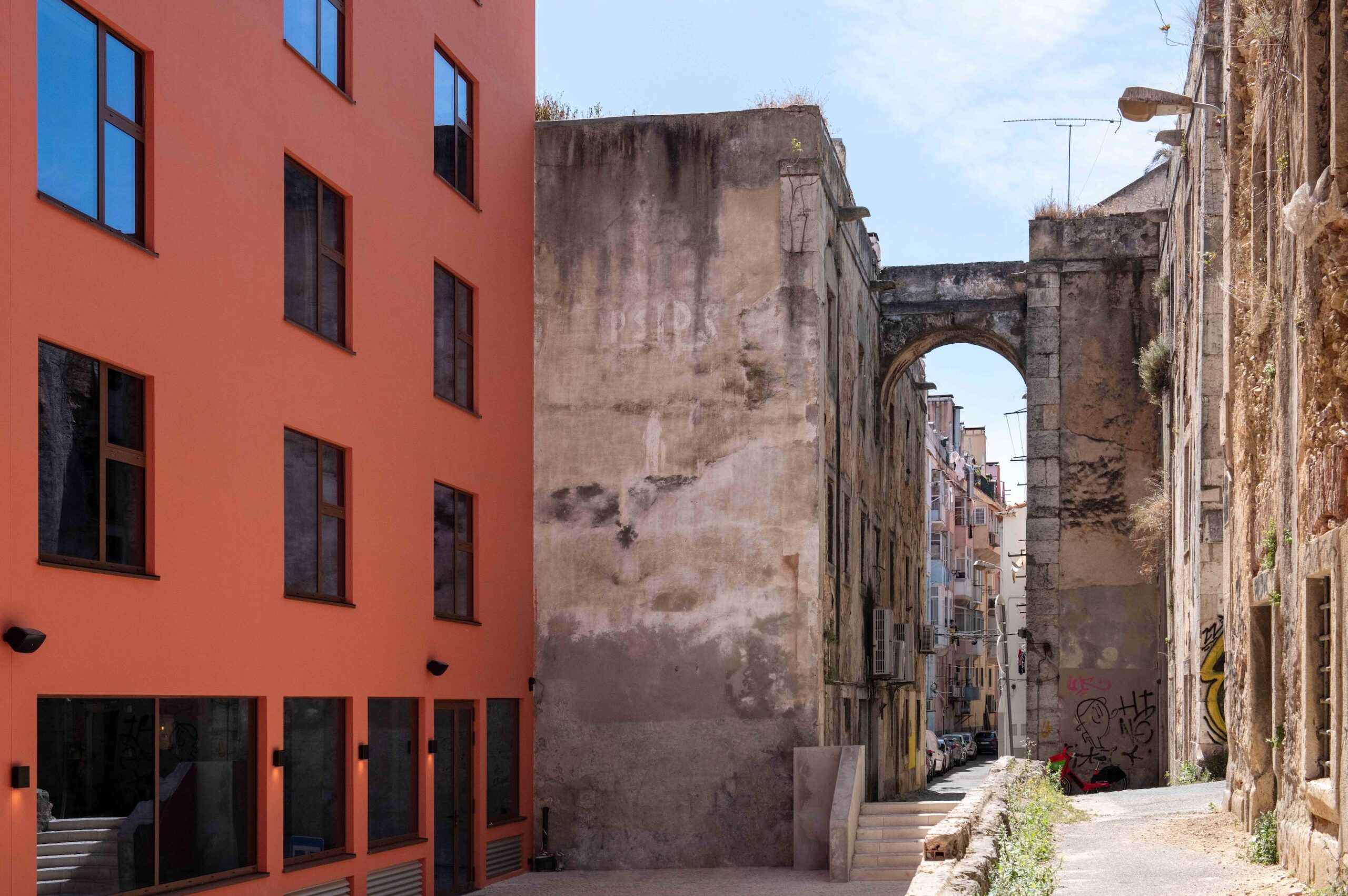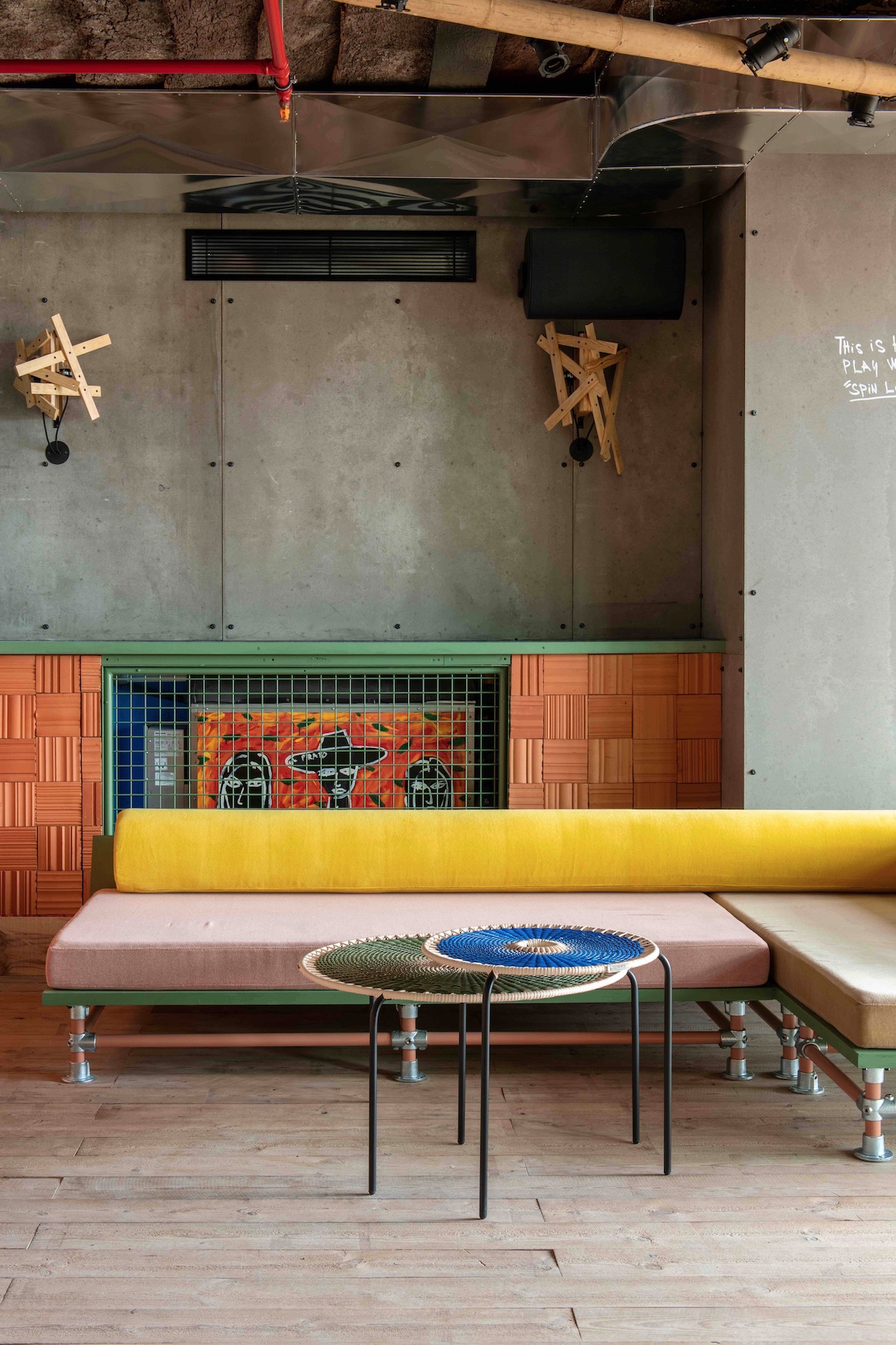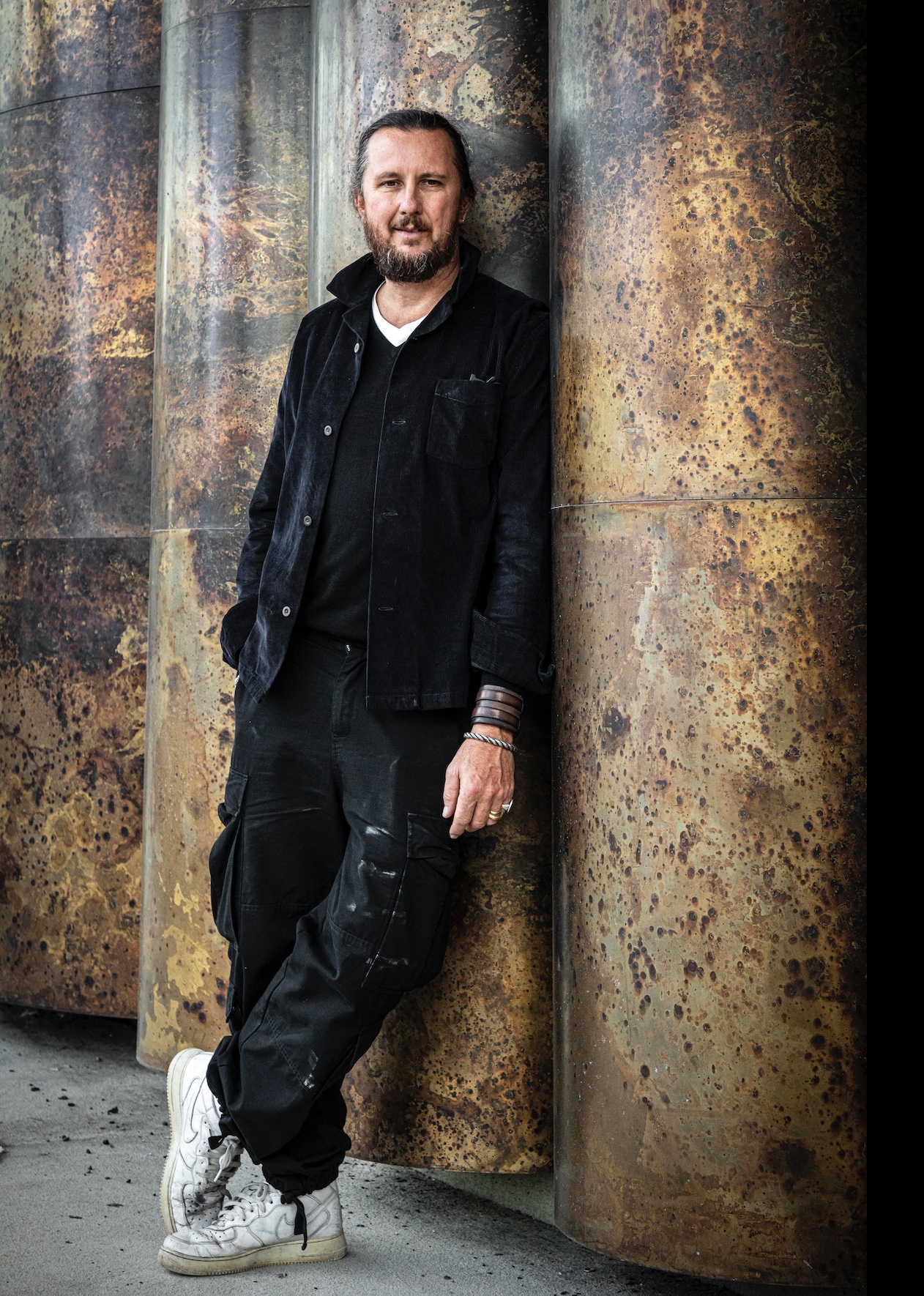Located in a former 1950s office building, JAM Lisbon comprises a 110-room hotel with a restaurant and rooftop swimming pool
 Photography by Mireille Roobaert. Courtesy of JAM hotel and Lionel Jadot
Photography by Mireille Roobaert. Courtesy of JAM hotel and Lionel Jadot
Words by Harriet Thorpe
Self-taught Belgian designer and master craftsman Lionel Jadot is behind the design of the eclectic, handcrafted and completely bespoke interiors of the new 110-room JAM Hotel in Lisbon, located inside a retrofitted former 1950s office building. Jadot’s approach to sustainability involved sourcing all craft and materials for the interiors from within a 100km radius of the hotel, resulting in a design that is reflective of local people, ideas and resources.
The concept for JAM launched in 2017 in Brussels, the city where Jadot is based and founded Atelier Lionel Jadot in 1999. Using skills of resourcefulness and upcycling learnt from a childhood of experimentation with wood and leather offcuts at his father’s furniture-making workshop, he filled the first JAM hotel with unique and bespoke pieces of design. In Lisbon, he extends this concept to further interrogate ideas around sustainability – exploring modularity, design for disassembly and recycled or sustainably sourced materials.
There’s a colourful, industrial and friendly interior aesthetic at the proudly low-budget hotel. Dynamic timber shelves in the bedroom are made of offcuts, neatly screwed together, never glued, for modular flexibility or future disassembly; while the lamps are of an open-source design (facilitated by Brussels-based Openstructures) are made out of recycled bricks recovered from local construction sites. The hotel’s bespoke bunk-beds are built with wood from a nearby forest that was being affordably sold off after a fire, and the bed headboards built of GOMA eco-tiles made of recycled shoe soles, from Flowco based near Porto.
 Photography by Mireille Roobaert. Courtesy of JAM hotel and Lionel Jadot
Photography by Mireille Roobaert. Courtesy of JAM hotel and Lionel Jadot
‘When an object is customised to its use, it’s less likely to become obsolete,’ says Jadot. ‘So, instead of choosing something from a catalogue, why not commission a local designer to craft something custom out of environmentally accessible and locally sourced materials?’
The sculptural ping-pong table is tailored to the hotel’s flexible rooftop social space; it can be used in the daytime for a game, as a dining table in the evening, then hung on the wall as a piece of art to make space for a dance-floor. Bringing a distinctly Portuguese flavour to this space; ridged terracotta tiles from Fabrica Sant’Anna (one of Lisbon’s oldest ceramic factories) clad the bar and cork bark sourced from Barrosinha, just south of Lisbon, clads the ceiling.
Instead of designing all these pieces himself, Jadot worked with a network of local Lisbon-based craftspeople including Emmanuel Babled, Jisamwe collective, Ivan Daniel Cova and Alexander Mignot. ‘[The project is] about curation and circularity. I don’t design something, then ask a workshop to produce it. I pitch craftspeople the project, invite them to join us, then we work together,’ he explains. Romanian designer Mircea Anghel of Cabana Studio, who he met at Collectible design fair in Brussels, was key to tapping into this network, and became a main co-collaborator on the fixed furniture for the hotel rooms, lobby and bar.
 Photography by Mireille Roobaert. Courtesy of JAM hotel and Lionel Jadot
Photography by Mireille Roobaert. Courtesy of JAM hotel and Lionel Jadot
As well as being a skilled designer, Jadot is also an active social networker interested in strengthening the artisanal craft community. In 2018, he launched the Zaventem Ateliers just outside of Brussels, a hub of 32 workshops located in a 19th-century paper factory, reviving the model of the “medieval craft guild” where spaces, resources and connections are shared.
He brought some designers with him from Brussels to work on JAM Lisbon – for example, the small, versatile oak stool designed by Pierre Emmanuel Vandeputte of the Zaventem Ateliers can be found in the bedrooms of the JAM Lisbon (also used at JAM Brussels).
As well as making connections within the design industry, the JAM concept seeks to connect designers directly to consumers too. A podcast introduces each object through a designer interview and sounds from the studio, which Jadot believes could be a catalyst for more sustainable and educated consumption. ‘The hotel is a huge communication tool – if you like a chair or a lamp, you can click on the contact of the producer or designer. Everything is on the table,’ he says.
 Photography by Tim Van De Velde featuring Lionel Jadot
Photography by Tim Van De Velde featuring Lionel Jadot
Overall, it’s a disruptive design method that changes how clients and designers work together. For example, for the next JAM Hotel, opening in Ghent in 2024, Jadot was able to scour the construction site of the former military building before it was retrofitted and put materials such as blue stone into storage, ready to be re-used and designed into objects for the interior.
‘This method takes time, but it’s about thinking, where do you want to put your energy? It’s political, it’s an engagement, it’s something more radical,’ says Jadot. It requires energy to create these collaborations, but every interior designer and architect can work this way. Of course it can be more time-consuming, but in the end, why do we do this job? Let’s do something valuable, not in terms of money, but valuable in terms of the message.’
Get a curated collection of design and architecture news in your inbox by signing up to our ICON Weekly newsletter

















